Did she succeed in draing people"s saving in order to "kick start the economy"?While Finance Minister Chrystia Freeland recently declared Canada’s annual inflation rate of 2.8% as a “milestone moment” for Canadians, the word that better applies is that it’s still a millstone around their necks.
While it’s good news the annual inflation rate dropped to 2.8% in June from a 39-year high of 8.1% a year ago, Freeland’s boast that “it should provide a lot of relief to Canadians” is a hollow victory.
Despite the drop in the inflation rate to within the Bank of Canada’s annual inflation control target — an average of 2% within a range of 1% to 3% — there’s still a long way to go.
The main reason for the decrease in the annual inflation rate from 3.4% in May was a drop in gasoline prices.
But, as Statistics Canada also reported: “Grocery prices remain one of the largest contributors to the all-items CPI (Consumer Price Index), with a 9.1% year-over-year increase in June, nearly unchanged from the increase in May (+9.0%).
“The largest contributors within the food component were meat (+6.9%), bakery products (+12.9%), dairy products (+7.4%) and other food preparations (+10.2%).
“Fresh fruit prices grew at a faster pace year over year in June (+10.4%) than in May (+5.7%), driven, in part, by a 30.0% month-over-month increase in the price of grapes.”
When the cost of a necessity such as food is contributing to inflation, along with a 30.1%-increase in the cost of mortgage interest payments, year-over-year, it’s hardly the time to declare victory over inflation.
Finally, a decrease in the overall rate of inflation is not the same as a decrease in prices paid by Canadians.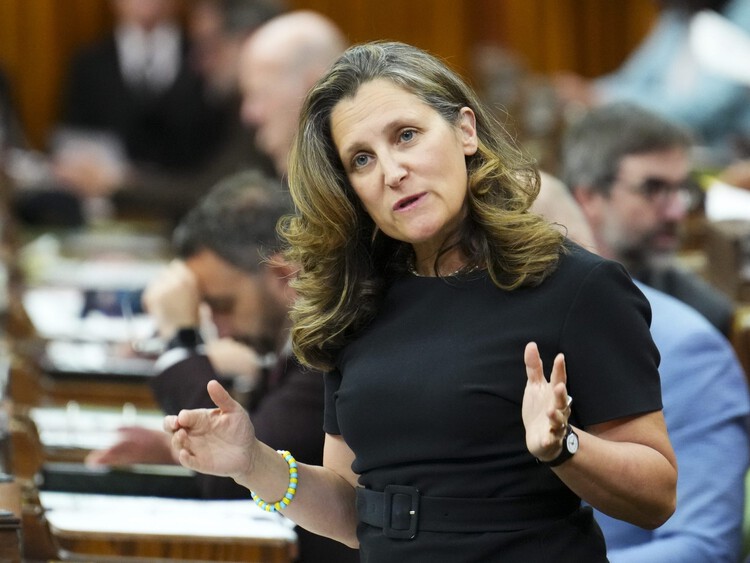
EDITORIAL: A hollow victory over inflation — Toronto Sun
While Finance Minister Chrystia Freeland recently declared Canada’s annual inflation rate of 2.8% as a “milestone moment” for Canadians, the word that better applies is that it’s still a millstone around their necks. While it’s good news the annual inflation rate dropped to 2.8% in June from a...apple.news
It means the rate of increase in prices has slowed down, while the costs of necessities such as food continue to rise.
While Freeland also boasted that Canada’s inflation rate is the lowest in the G-7, what’s far more significant to Canadians is that the Bank of Canada has raised its key interest rate from 0.25% in March 2022 to 5.0% today, to fight inflation.
That has dramatically increased the cost of borrowing for everything from mortgages to business and consumer loans, with no indication the bank intends to lower it any time soon.
Well, today is the Liberal/NDP Non-Coalition Coalition Budget Day!
- Thread starter Ron in Regina
- Start date
You are using an out of date browser. It may not display this or other websites correctly.
You should upgrade or use an alternative browser.
You should upgrade or use an alternative browser.
I can only answer personally, and yeah, it’s made a noticeable dent in our personal finances.Did she succeed in draing people"s saving in order to "kick start the economy"?
Mine too. I had to cash in some TFSA and not contributing what I used to.I can only answer personally, and yeah, it’s made a noticeable dent in our personal finances.
I don't know about kick starting the economy. From what I have been reading, it was more a kick in the nuts. About 45000 fewer construction workers than a year ago. I don't know anyone that can afford more government help. But then I don't know any of the Laurentian Elite either.Did she succeed in draing people"s saving in order to "kick start the economy"?
Screw the Laurentian Elite. They fear the Coteau and Wascana Basin Elite running up the ladder while wearing hard hats and steel toed boots.I don't know about kick starting the economy. From what I have been reading, it was more a kick in the nuts. About 45000 fewer construction workers than a year ago. I don't know anyone that can afford more government help. But then I don't know any of the Laurentian Elite either.
What do Canadians think of carbon taxes? We know what the federal government thinks: Environment Minister Steven Guilbeault is a huge fan, as he has been a vocal proponent of his government’s imposition of a minimum price of $65 per tonne of carbon, which has raised the price at the pump by 14 cents per litre in much of the country.Did she succeed in draing people"s saving in order to "kick start the economy"?
The escalating carbon tax, which will eventually reach $170 per tonne, combined with the new clean fuel regulations, which the PBO estimates will cost households between $384 and $1,157 a year by 2030, will raise gas prices even further.
I can only answer personally, and yeah, it’s made a noticeable dent in our personal finances.
As for Finance Minister Chrystia Freeland, she is carbon-tax-positive, as well. While in Prince Edward Island in July, she was asked about the impact higher fuel prices will have on residents and gave this tone-deaf answer: “I am right now an MP for downtown Toronto, and a fact that still shocks my dad is that I don’t actually own a car.… I’m like 300 metres from the nearest subway; I walk, I take the subway.”Mine too. I had to cash in some TFSA and not contributing what I used to.
While she apparently forgot that she has access to a ministerial car and chauffeur, she did concede that, “I understand that there are communities in P.E.I. and across Atlantic Canada where you need to drive.”
Indeed. And what do people in those communities, and the rest of country, think about carbon taxes? As it turns out, they’re not nearly as bullish on the subject.
Businesses rely on road transportation to move product. Individuals rely on it to move themselves and their groceries, children, hockey equipment, furniture — basically anything too bulky to carry. People with mobility issues — a growing cohort of seniors — aren’t hopping on the subway. And people in rural areas don’t have a subway to hop on.I don't know about kick starting the economy. From what I have been reading, it was more a kick in the nuts. About 45000 fewer construction workers than a year ago. I don't know anyone that can afford more government help. But then I don't know any of the Laurentian Elite either.
“In their zeal to convert everyone to cyclists and transit riders, the Liberals are ignoring the everyday realities of Canadians. They are asking Canadians to save money by foregoing time, without realizing that people have precious little of each!!!!”
In other cases, they are asking people to do the impossible: not use their vehicles, when their vehicles are their only way of getting from point A to B….& that’s not even TOUCHING upon heating our homes through Canadian Winters….that’s the uglier one that somehow keeps getting skipped over in the whole Carbon Tax stories.
The annual rate of inflation rose to 3.3 per cent in July, Statistics Canada said Tuesday.
That’s up from June’s inflation rate of 2.8 per cent. Economists had widely expected an increase.
Gas prices contributed to the acceleration, StatCan said, as did growing costs on mortgages tied to higher interest rates. Food prices at the grocery store were up 8.5 per cent in the month, the agency noted, but are growing at a slower rate than the 9.1 per cent seen in June.
The Bank of Canada is hoping restrictive interest rates will tamp inflation all the way back down to its two per cent target.

 apple.news
That is all. Move along.
apple.news
That is all. Move along.
That’s up from June’s inflation rate of 2.8 per cent. Economists had widely expected an increase.
Gas prices contributed to the acceleration, StatCan said, as did growing costs on mortgages tied to higher interest rates. Food prices at the grocery store were up 8.5 per cent in the month, the agency noted, but are growing at a slower rate than the 9.1 per cent seen in June.
The Bank of Canada is hoping restrictive interest rates will tamp inflation all the way back down to its two per cent target.
Why inflation's latest jump is bad news for the Bank of Canada — Global News
Statistics Canada says the annual rate of inflation in the country jumped to 3.3 per cent in July, but food prices showed signs of slowing pressures.
Oh nice. Only 3.3% onto of the 20% in the past 2 years? Get rid of the extra 23% then and only then is it a win.The annual rate of inflation rose to 3.3 per cent in July, Statistics Canada said Tuesday.
That’s up from June’s inflation rate of 2.8 per cent. Economists had widely expected an increase.
Gas prices contributed to the acceleration, StatCan said, as did growing costs on mortgages tied to higher interest rates. Food prices at the grocery store were up 8.5 per cent in the month, the agency noted, but are growing at a slower rate than the 9.1 per cent seen in June.
The Bank of Canada is hoping restrictive interest rates will tamp inflation all the way back down to its two per cent target.
That is all. Move along.
Why inflation's latest jump is bad news for the Bank of Canada — Global News
Statistics Canada says the annual rate of inflation in the country jumped to 3.3 per cent in July, but food prices showed signs of slowing pressures.apple.news
The Bank of Canada may have to raise interest rates further, given that inflation may stay high for some time, said governor Tiff Macklem Thursday.
His speech at the Calgary Chamber of Commerce came one day after the central bank decided to hold its key interest rate steady at five per cent as signs of an economic slowdown grow.
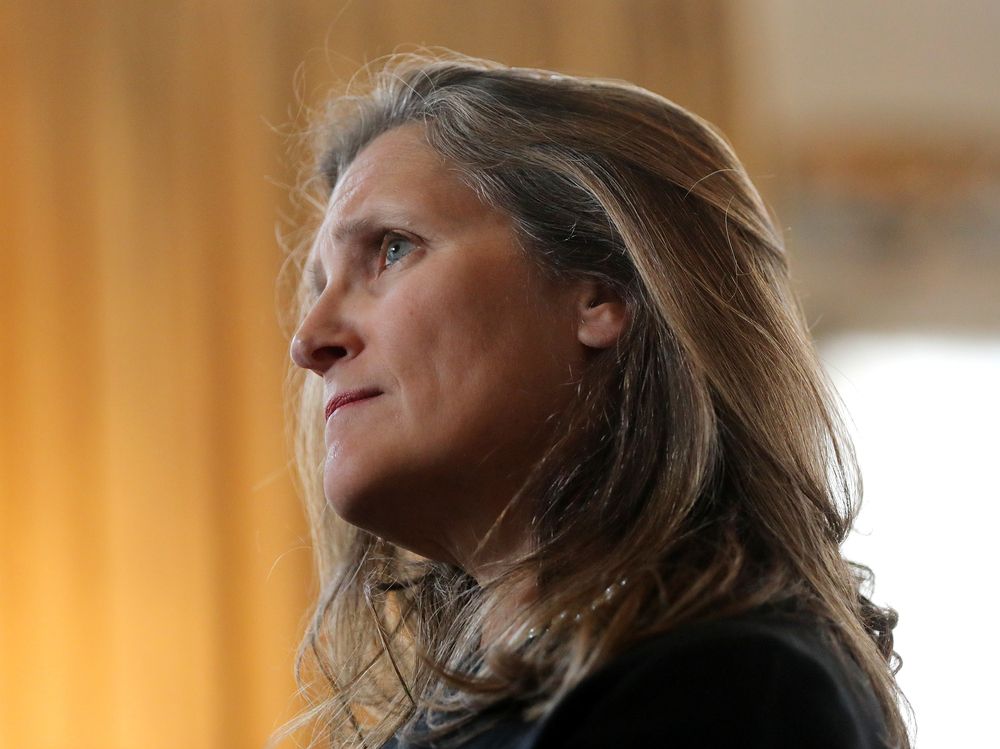
 financialpost.com
financialpost.com
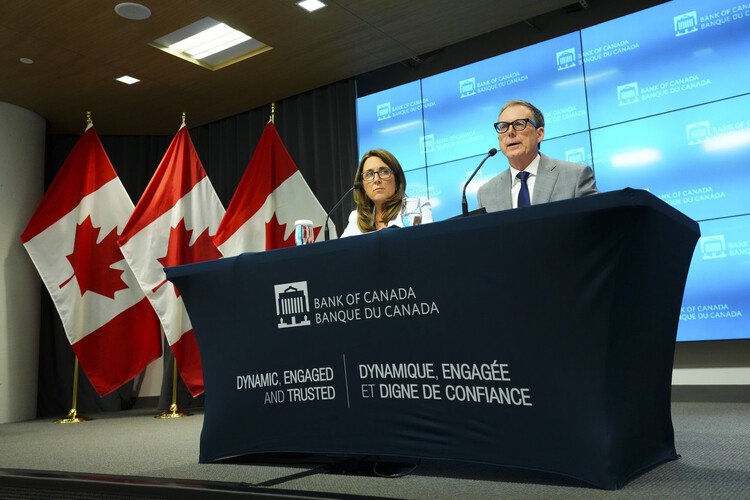
 apple.news
apple.news

It’s not that the Liberals’ record-high immigration is causing inflation, housing unaffordability and unemployment all by itself. Nor are the federal government’s two carbon taxes (so far) solely responsible for the rising cost of living. The Bank of Canada’s willingness to print money for the Trudeau government to spend and the bank’s string of interest rate hikes aren’t the only causes, either.
But you roll all of those together and you end up with an economic crisis the likes of which Canada has not seen since the early 1990s.
Add to current inflation-producing policies the federal mandate that only expensive electric vehicles (EV) will be available by 2035 and that all electricity must be generated using expensive, net-zero methods, and the current unaffordability pain could continue for a decade or more.
Most young Canadians who don’t already have a home are having trouble buying one. Soon we may all have to add the difficulty of affording an EV. And the expense of a home charging station.
The policies that got us here are mostly the doing of the Trudeau Liberals and the current governor of the Bank of Canada, Tiff Macklem.
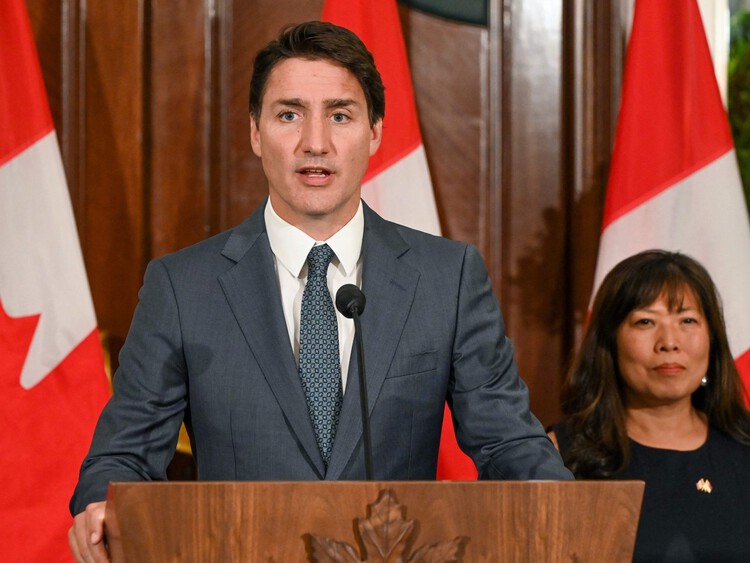
 apple.news
apple.news
His speech at the Calgary Chamber of Commerce came one day after the central bank decided to hold its key interest rate steady at five per cent as signs of an economic slowdown grow.

Chrystia Freeland calls Bank of Canada rate hold 'welcome relief'
Prime Minister Justin Trudeau’s government praised the Bank of Canada for holding interest rates steady. Find out more.
Bank of Canada may need to raise rates again, despite this week's hold: Macklem — The Canadian Press
OTTAWA - The Bank of Canada may have to raise interest rates further, given that inflation may stay high for some time, said governor Tiff Macklem Thursday.

It’s not that the Liberals’ record-high immigration is causing inflation, housing unaffordability and unemployment all by itself. Nor are the federal government’s two carbon taxes (so far) solely responsible for the rising cost of living. The Bank of Canada’s willingness to print money for the Trudeau government to spend and the bank’s string of interest rate hikes aren’t the only causes, either.
But you roll all of those together and you end up with an economic crisis the likes of which Canada has not seen since the early 1990s.
Add to current inflation-producing policies the federal mandate that only expensive electric vehicles (EV) will be available by 2035 and that all electricity must be generated using expensive, net-zero methods, and the current unaffordability pain could continue for a decade or more.
Most young Canadians who don’t already have a home are having trouble buying one. Soon we may all have to add the difficulty of affording an EV. And the expense of a home charging station.
The policies that got us here are mostly the doing of the Trudeau Liberals and the current governor of the Bank of Canada, Tiff Macklem.
GUNTER: Trudeau Liberals, BoC's Macklem seem economically illiterate — Toronto Sun
It’s not that the Liberals’ record-high immigration is causing inflation, housing unaffordability and unemployment all by itself. Nor are the federal government’s two carbon taxes solely responsible for the rising cost of living. The Bank of Canada’s willingness to print money for the Trudeau...
Here’s something weirdly interesting….
Well, when everyone is a victim, everyone also becomes, perforce, an oppressor — and the punishment for that is severe. Maybe you’re a bit fat (victim, victim), but you’re white, or the tan that we now call brown that could become white in a flash. Presto! You’re a perpetrator. Maybe you don’t own a house (victim, victim). But you own a rusty old wreck from the 90s. Compared to those who can only afford a bicycle (perhaps because they’re useless layabouts) you are definitely an oppressor. Perhaps you’re genuinely poor (victim victim), but you’re young. You can be certain that you are then at least afflicted by implicit ageism, and your very youth a mark of at least your unconscious bias and general shameful reprehensibility.
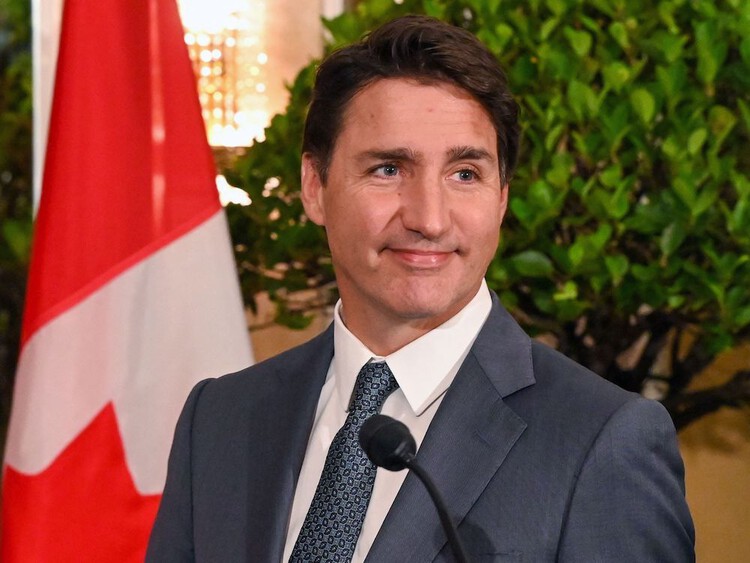
 apple.news
apple.news
At first, I thought it was going to be discussing predominantly incoming censorship bills….And then it goes… elsewhere.

Are you beginning to understand the game? I doubt it. It’s much easier for Canadians to keep their sheep/ostrich-heads firmly in the sand, and assume that anyone pointing out not so much what’s going on but what’s already happened is an extremist, a bigot, a right-wing conspiracy theorist, a Confederate sympathizer (in Canada (!)), a MAGA Republican, hell-bent for God only knows what possible reason on overthrowing Canadian democracy.
It is not that freedom of speech is threatened in Canada, by the way, good people. It’s that it’s already pretty much gone — although, God willing, not permanently. The same can be said for freedom of conscience and association. We gave up freedom of mobility under Trudeau, which was the only freedom he could directly threaten, in his attempt to (successfully) divide Canadians, and therefore promptly did.
We still have the freedom to pretend that everything is just as it was 20 or even 10 years ago. But it’s not. The fact that I am being persecuted for criticizing the prime minister, for passing on the opinions of Pierre Poilievre, and for doubting the opinions of that veritable traitor, Steven Guilbeault, is a primary indication of that. My case would not be attracting the international attention that it is — as is the prosecution of the Trucker Convoy leaders, whose protest was widely admired outside this country — if that was not the case.
The Link above is worth a read through.
Well, when everyone is a victim, everyone also becomes, perforce, an oppressor — and the punishment for that is severe. Maybe you’re a bit fat (victim, victim), but you’re white, or the tan that we now call brown that could become white in a flash. Presto! You’re a perpetrator. Maybe you don’t own a house (victim, victim). But you own a rusty old wreck from the 90s. Compared to those who can only afford a bicycle (perhaps because they’re useless layabouts) you are definitely an oppressor. Perhaps you’re genuinely poor (victim victim), but you’re young. You can be certain that you are then at least afflicted by implicit ageism, and your very youth a mark of at least your unconscious bias and general shameful reprehensibility.
Jordan Peterson: Trudeau and the equity tyrants must be stopped — National Post
We’re at the edge of the terrible transformation that is occurring everywhere in the free world
At first, I thought it was going to be discussing predominantly incoming censorship bills….And then it goes… elsewhere.

Are you beginning to understand the game? I doubt it. It’s much easier for Canadians to keep their sheep/ostrich-heads firmly in the sand, and assume that anyone pointing out not so much what’s going on but what’s already happened is an extremist, a bigot, a right-wing conspiracy theorist, a Confederate sympathizer (in Canada (!)), a MAGA Republican, hell-bent for God only knows what possible reason on overthrowing Canadian democracy.
It is not that freedom of speech is threatened in Canada, by the way, good people. It’s that it’s already pretty much gone — although, God willing, not permanently. The same can be said for freedom of conscience and association. We gave up freedom of mobility under Trudeau, which was the only freedom he could directly threaten, in his attempt to (successfully) divide Canadians, and therefore promptly did.
We still have the freedom to pretend that everything is just as it was 20 or even 10 years ago. But it’s not. The fact that I am being persecuted for criticizing the prime minister, for passing on the opinions of Pierre Poilievre, and for doubting the opinions of that veritable traitor, Steven Guilbeault, is a primary indication of that. My case would not be attracting the international attention that it is — as is the prosecution of the Trucker Convoy leaders, whose protest was widely admired outside this country — if that was not the case.
The Link above is worth a read through.
…or 7-11 Night Managers…Mamas don't you babies grow up to be cowboys.
MPs are returning to the House of Commons amid a shifting political landscape and with the Liberals now openly acknowledging that Canadians are struggling and the government needs to do more to respond to the housing crisis and broader affordability concerns.
Liberals make affordability, public safety top priorities as grocery executives meet with minister — The Globe and Mail
With competing policies and priorities, federal parties zero in on housing crisis and cost of living
(The government has threatened new tax measures on grocery store chains if they don’t rein in prices. Last week Mr. Trudeau said the grocery stores had to craft a plan to bring down prices by Thanksgiving, etc…)
Finance Minister Chrystia Freeland and Innovation Minister François-Philippe Champagne met with the CEOs of Sobeys, Loblaw, Metro, Walmart and Costco in Ottawa Monday to assess their options.
Prime Minister Justin Trudeau on Thursday announced he was summoning leaders from Canada’s biggest grocers together on Monday, calling for a plan to stabilize food inflation and warning tax measures were on the table should Canadians continue to face undue pain at the grocery store.
(Abacus polling released Thursday showed the Conservatives have a 15-point lead over the Liberals, with affordability issues topping voters’ agendas, so…here we are)
Grocer summit to 'take the heat off' Ottawa, not tackle food inflation: experts — Global News
As Ottawa prepares to summon grocery executives to come up with a plan to address food inflation, some analysts say the move is 'disingenuous.'
New federal data show a quarter of Canadians are struggling to make ends meet, and though pressure is easing gradually from a peak at the end of last year, Prairie provinces and marginalized communities nationwide are facing the worst of it. Good times.

 apple.news
apple.news
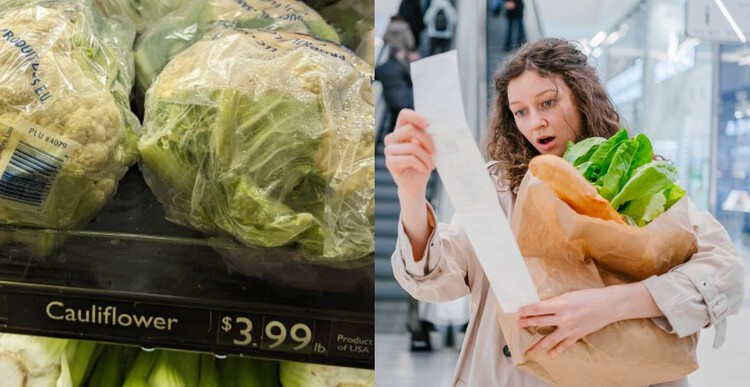
 apple.news
apple.news
One in four Canadians still struggling to make ends meet: StatCan — CTV News
After a peak at nearly 35 per cent last year, second-quarter results from the Canadian Social Survey show that meeting household financial needs remains difficult for many, with wide gaps between regions and demographic groups.
Shopper shocked at $9 cauliflower in Canadian grocery store — Daily Hive
"It's just ridiculous."
Get a map and a clue.You'd rather pressure WASN'T easing gradually?
Prairie provinces and marginalized communities nationwide are facing the worst of it.
If they want to help the disadvantaged stop borrowing money off them and paying them back without interest 15 months later. Pay out all of the 2022 benefits in one shot and start the 2023 rebates quarterly and adjusted to inflation quarterly.
Canadians need to be prepared for the growing likelihood that interest rates won’t return to the low levels seen over the past 15 years, Bank of Canada senior deputy governor Carolyn Rogers warned Thursday.And dump the Carbon Tax, that our largest trade partner doesn’t have, so that we can at least become more competitive and keep those dollars in our pockets instead of getting nickels back in handout’s from Dollars collected in this tax.
In a speech in Vancouver, the central bank’s second-in-command said that many of the economic forces that pulled down interest rates in recent decades are going into reverse. That “new normal” creates risks for indebted households, businesses and the broader financial system, which need to be managed proactively, she said.
The Bank of Canada has raised interest rates 10 times over the past year and a half to fight runaway inflation. That’s brought the bank’s benchmark policy rate to 5 per cent, the highest level since 2001.I wish TurdOWE felt the same about climate change as he does about balancing budgets.
Ms. Rogers avoided talking about the near-term path for interest rates. But her comments suggest that when the bank does eventually start lowering rates – something many Bay Street analysts expect to begin around the middle of next year – it may not lower them all that much, barring a war in the Ukraine, & a lack of peace in the Middle East, etc…
Canadians should be ready for rates to stay higher in the long run, Bank of Canada senior deputy governor says — The Globe and Mail
The central bank has raised interest rates 10 times over the past year and a half to fight runaway inflation
Intrest rates are SFA. Trudeau knows oil is going to hit $200bbl+ USD in a matter of weeks.Canadians need to be prepared for the growing likelihood that interest rates won’t return to the low levels seen over the past 15 years, Bank of Canada senior deputy governor Carolyn Rogers warned Thursday.
In a speech in Vancouver, the central bank’s second-in-command said that many of the economic forces that pulled down interest rates in recent decades are going into reverse. That “new normal” creates risks for indebted households, businesses and the broader financial system, which need to be managed proactively, she said.
The Bank of Canada has raised interest rates 10 times over the past year and a half to fight runaway inflation. That’s brought the bank’s benchmark policy rate to 5 per cent, the highest level since 2001.
Ms. Rogers avoided talking about the near-term path for interest rates. But her comments suggest that when the bank does eventually start lowering rates – something many Bay Street analysts expect to begin around the middle of next year – it may not lower them all that much, barring a war in the Ukraine, & a lack of peace in the Middle East, etc…
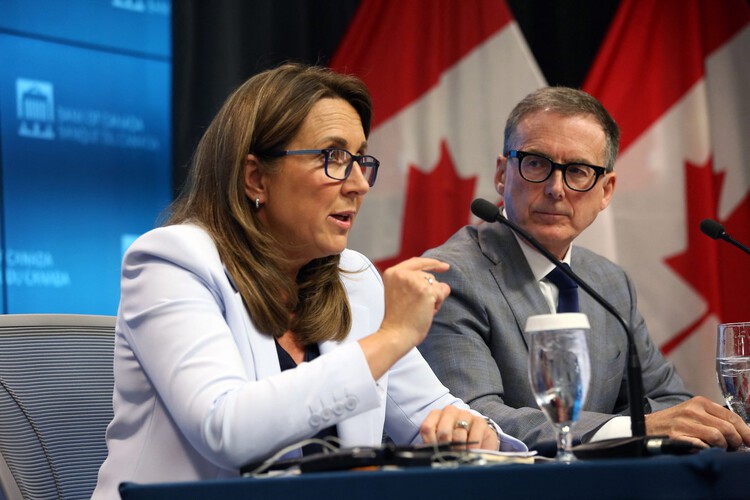
Canadians should be ready for rates to stay higher in the long run, Bank of Canada senior deputy governor says — The Globe and Mail
The central bank has raised interest rates 10 times over the past year and a half to fight runaway inflationapple.news
Are you ready for it?
No. Honestly, no. Shame Canada didn’t have more capacity to ship petroleum products in other directions other than just the discounted rate South for the most part….But I’ll take it.Intrest rates are SFA. Trudeau knows oil is going to hit $200bbl+ USD in a matter of weeks.
Are you ready for it?
Surprise!! (Not surprised)

 apple.news
apple.news

NDP agree to help pass Liberal 'affordable housing and groceries' bill in exchange for amendments — CTV News
With the parliamentary clock ticking down and the government yet to pass their 'affordable housing and groceries' bill—the first piece of federal legislation tabled in the fall sitting—the NDP have agreed to help the Liberals advance Bill C-56 in exchange for a series of amendments inspired by a...

